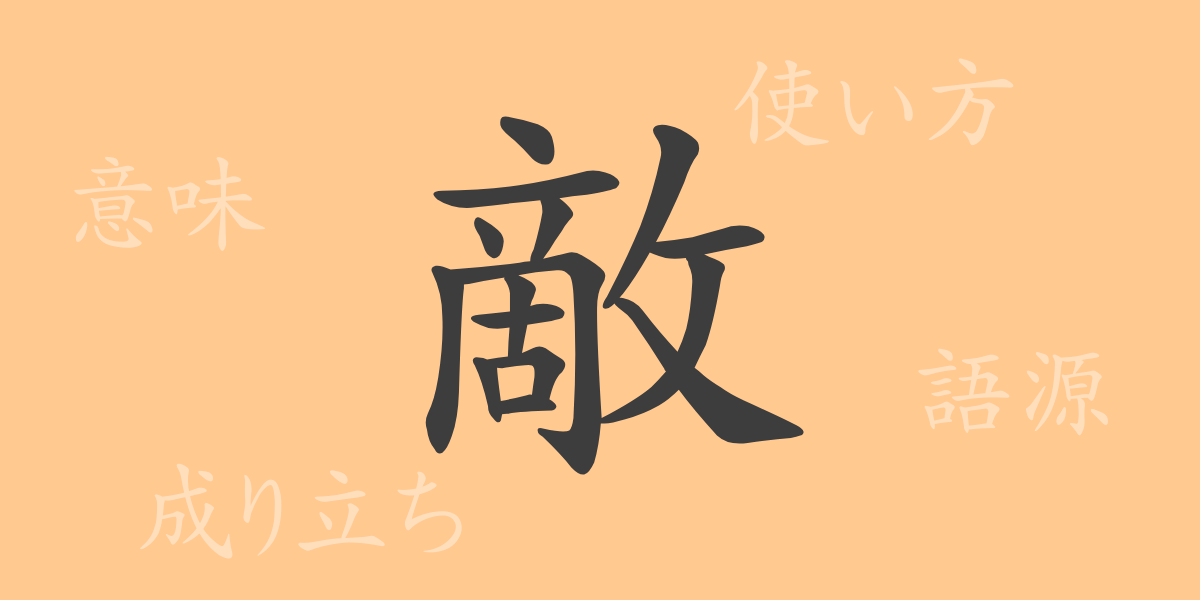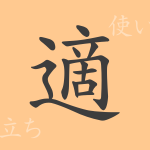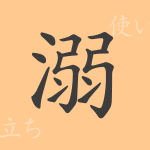Kanji, integral to Japanese culture and language, each possesses unique histories and meanings. Among these, ‘敵(テキ)’ is frequently used in daily life, extending beyond merely denoting an adversary. This article explores the origins, meanings, and applications of ‘敵’, delving into related idioms and proverbs that enrich its narrative.
Origins of ‘敵(テキ)’
The kanji ‘敵’ traces its roots to ancient Chinese script, originally representing an opponent in battle. Derived from symbols depicting ‘two opposing hands’, it has evolved over time to its current form. Initially symbolizing direct opposition, it has come to represent a broader array of adversaries.
Meaning and Usage of ‘敵(テキ)’
‘敵’ primarily means an opponent or enemy but is versatile in its usage. It can denote a competitor or a hurdle, and metaphorically, it is also used to describe challenges or undesirable circumstances. The kanji encapsulates both literal and figurative oppositions.
Readings, Stroke Count, and Radical of ‘敵(テキ)’
The kanji ‘敵’ offers various readings and fundamental details:
- Readings: On’yomi ‘テキ’, Kun’yomi ‘かたき’.
- Stroke Count: 15 strokes.
- Radical: ‘攴’ (ぼくづくり), simplified to ‘攵’ in educational contexts.
Idioms, Phrases, and Proverbs Using ‘敵(テキ)’
‘敵’ appears in numerous idioms and proverbs, reflecting its deep cultural significance:
- 敵討ち(かたきうち): Seeking vengeance against a foe.
- 敵前逃亡(てきぜんとうぼう): Fleeing from the enemy in battle, a metaphor for cowardice.
- 敵に塩を送る: Helping an enemy in need, advocating fairness even towards competitors.
- 敵もさるもの: Acknowledging the commendable qualities or abilities of an adversary.
Conclusion on ‘敵(テキ)’
The kanji ‘敵’ has evolved through history, adopting varied meanings and uses in modern Japanese. From its primary role as an adversary to its more complex expressions in idioms, ‘敵’ plays a significant role in Japanese language and culture. Understanding ‘敵’ enriches learners’ comprehension of Japanese, bridging historical context and contemporary usage.

























